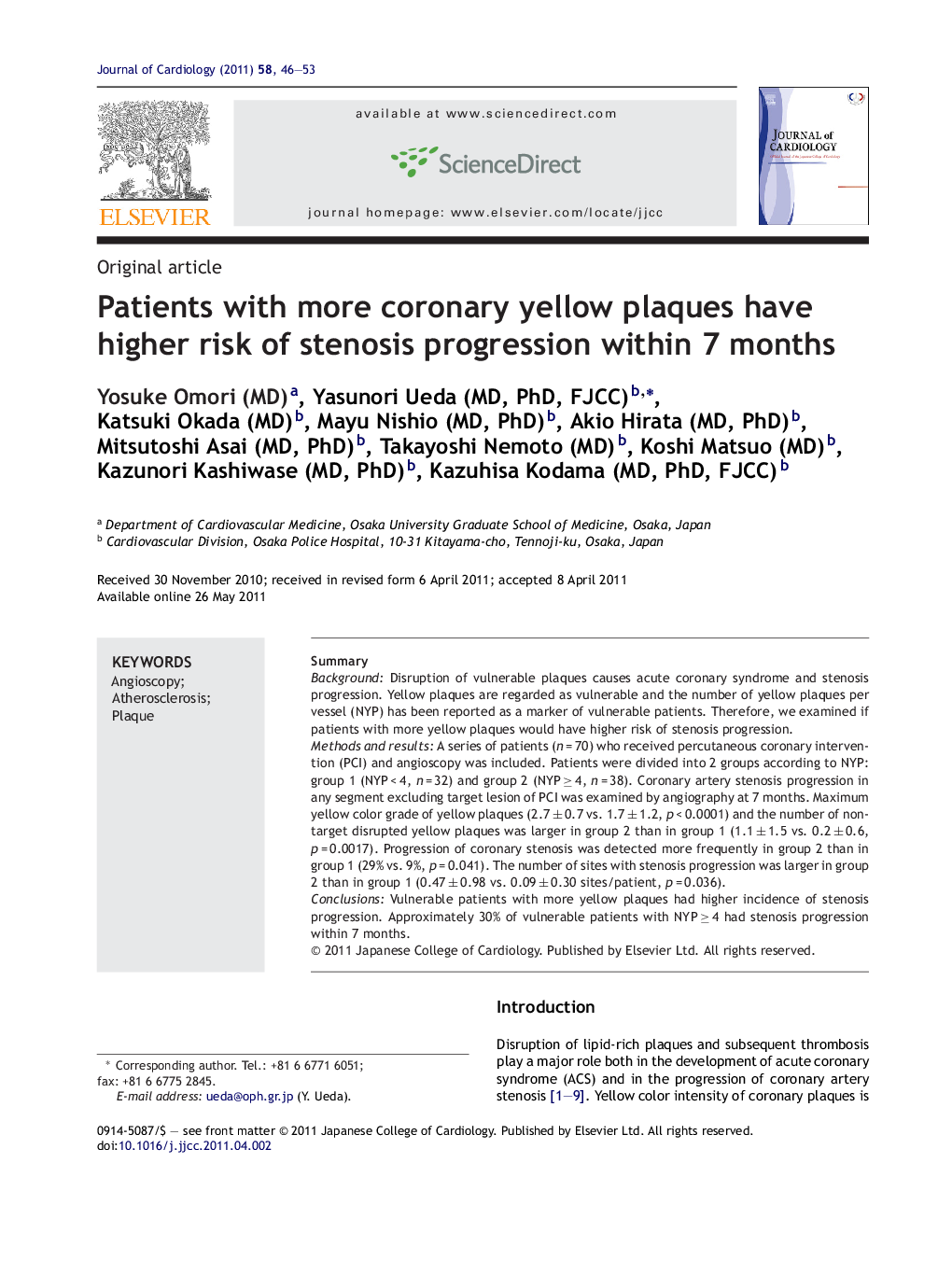| Article ID | Journal | Published Year | Pages | File Type |
|---|---|---|---|---|
| 2963392 | Journal of Cardiology | 2011 | 8 Pages |
SummaryBackgroundDisruption of vulnerable plaques causes acute coronary syndrome and stenosis progression. Yellow plaques are regarded as vulnerable and the number of yellow plaques per vessel (NYP) has been reported as a marker of vulnerable patients. Therefore, we examined if patients with more yellow plaques would have higher risk of stenosis progression.Methods and resultsA series of patients (n = 70) who received percutaneous coronary intervention (PCI) and angioscopy was included. Patients were divided into 2 groups according to NYP: group 1 (NYP < 4, n = 32) and group 2 (NYP ≥ 4, n = 38). Coronary artery stenosis progression in any segment excluding target lesion of PCI was examined by angiography at 7 months. Maximum yellow color grade of yellow plaques (2.7 ± 0.7 vs. 1.7 ± 1.2, p < 0.0001) and the number of non-target disrupted yellow plaques was larger in group 2 than in group 1 (1.1 ± 1.5 vs. 0.2 ± 0.6, p = 0.0017). Progression of coronary stenosis was detected more frequently in group 2 than in group 1 (29% vs. 9%, p = 0.041). The number of sites with stenosis progression was larger in group 2 than in group 1 (0.47 ± 0.98 vs. 0.09 ± 0.30 sites/patient, p = 0.036).ConclusionsVulnerable patients with more yellow plaques had higher incidence of stenosis progression. Approximately 30% of vulnerable patients with NYP ≥ 4 had stenosis progression within 7 months.
